$0.00
No products in the cart.
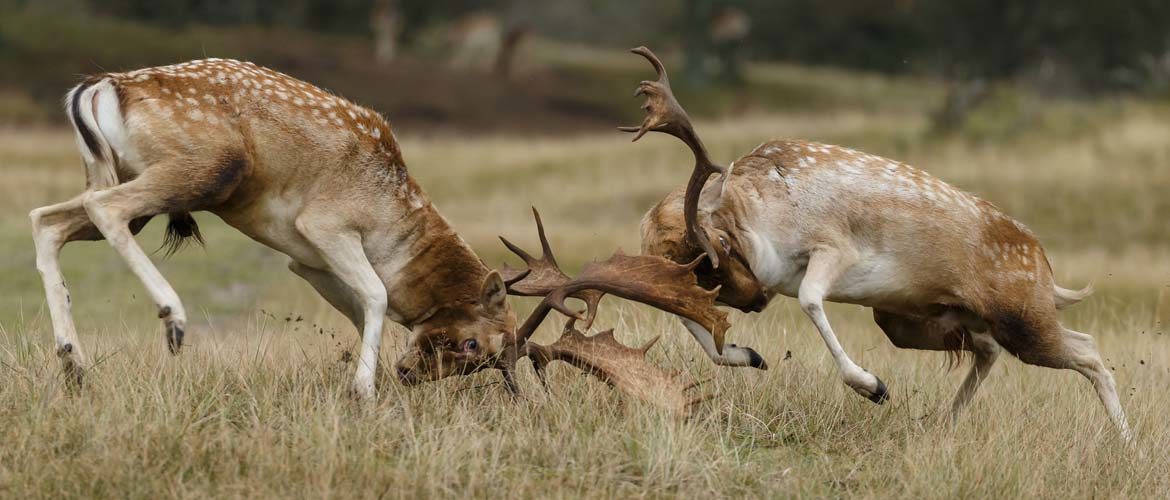
The Fallow (Dama dama & Dama dama dama), although humble in its presence within varied landscape, in itself attracts some controversy. Its wide spread (re)introduction across Europe is the subject of conjecture as to who or how the deer was distributed across the continent. Adorning many royal parklands, forests and enclosures for centuries, the Fallow has represented mankind’s attraction to taming wild creatures and in cases such as Australia and New Zealand provide immense enjoyment for farmer and hunter alike. Records show that the Fallow has been held in captivity for as long as sheep, goats & pigs (The Fallow deer D. Banwell). The husbandry of such animals depicts humans want for familiarity, their subsequent distribution by Acclimation Societies and their ongoing prosperity is a testament to their place in human history.
The species’ taxonomic name, Dama dama as well as Dama dama dama was defined by Carl Linnaeus in 1758.
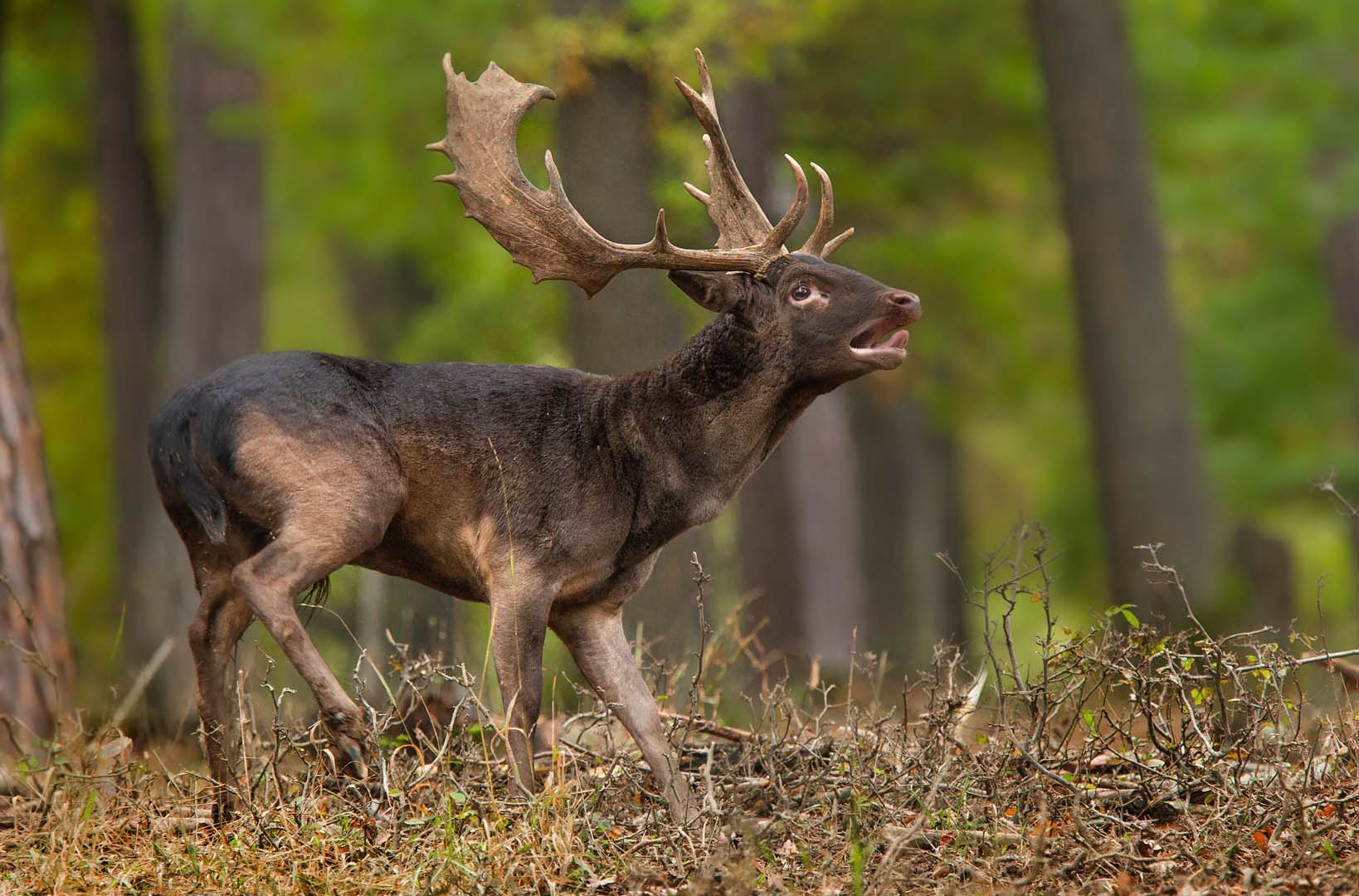
Generally this species is referred to as Fallow (Dama dama) with two subspecies, as some taxonomists include the Persian fallow deer as a subspecies (D. d. mesopotamica), with both being grouped together, while others treat it as a different species all together (D. mesopotamica) (Masseti, M. & Mertzanidou, D. (2008). “Dama dama”).
The European fallow or common fallow deer (Dama dama) is native to Turkey and possibly the Italian Peninsula, Balkan Peninsula, and the island of Rhodes in Europe. In Australia, although the Common variety of fallow is the predominate species on the landscape, reports suggest Mesopotamian fallow deer has been imported into Australia and New Zealand to cross with farmed(Common) fallow deer to increase their size and provide hybrid vigour (Corinda Fallow Deer Farm, 2013). With farm stock escapee’s taking place over time, there is no evidence to suggest that the wild Australian fallow, in some areas is not a result of a hybridisation, or has influence of Dama dama Mesopotamica.
Depending on the literature, there are two species within the genus. Note that where Dama Mesopotamica is recognised as a subspecies of Dama dama, it is referred to as Dama dama mesopotamica:
Further distant relationships exist where Geist has suggested a distinct relationship between “Dama” and the Axis. Recent morphological work by Pfeiffer, Lister and Nock support this idea.
Further to the reference of a distance relationship, Arthur Bentley cites in his “An Introduction to the Deer of Australia”, “In recent years it has been stated that the axis interbred with the fallow and that a Hybrid is now established in Tasmania”. He does go on to state, “This appears to be genetically impossible and as there has been no evidence of a hybrid, it can be safely discounted”.
This information by Arthur, no doubt came from Walkabout. Vol. 24 No. 2 (1 February 1958) which quotes “Chitral (sic) or Indianspotted deer were introduced to Tasmania in 1829 by Captains Dumaresque and Kemp.
Fallow deer were imported in 1834 by settler John Bisdee of Green Ponds (now the township of Kempton), about thirty miles north of Hobart. The two species interbred to form a typical island variety. The stag and the cream specimens shown in the picture are part of a large herd dwelling in the extensive parklands at Clarendon House, the property of Mr Menzies, of Launceston”. Although “It obviously remains a process to be put to the test” (The Fallow deer. Bruce D. Banwell) “According to Dr Geoff Asher, there have been verified hybrids between Sika and Fallow Deer”.
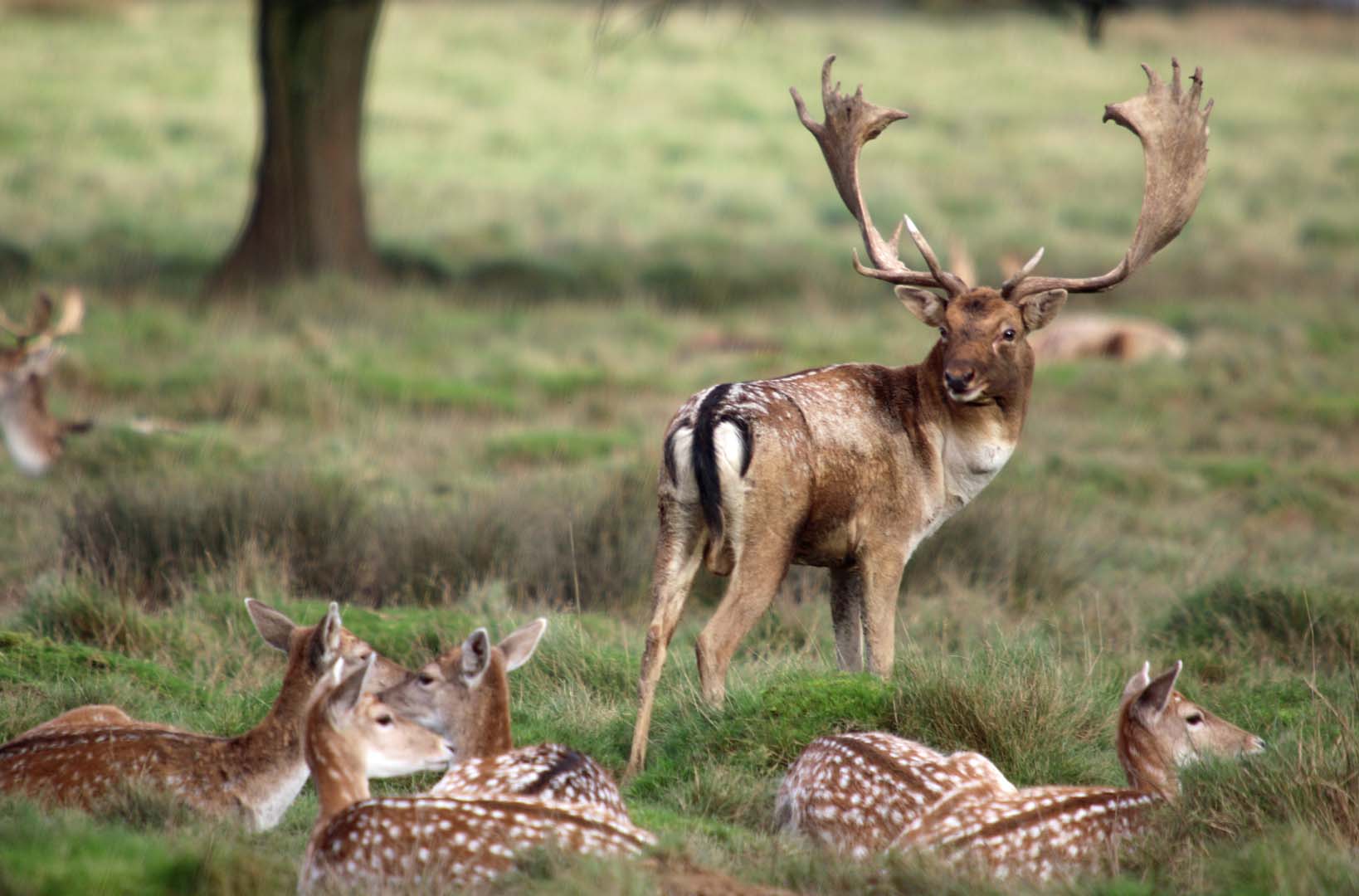
The male of the species is referred to as a “Buck” and the female a “Doe”. Adult bucks typically range in size between 130 – 160 centimetres long with a shoulder height of 85-95 centimetres and weigh between 60-100 kilograms. According to the referenced literature, the largest bucks may measure 190 centimetres long and weigh up to 150 kilograms. Depending on their location, Does are generally not significantly smaller at between 130-150 centimetres long with a shoulder height of 75-85 cm and a weight ranging between 30- 50 kilograms (Burnie D and Wilson DE (Eds.), Animal: The Definitive Visual Guide to the World’s Wildlife. DK Adult (2005). The species has great variations in the colour of the coat, as well as specific naming conventions for colour phases outlined below. Their pelage, generally will range between rich brown, reddish brown, pale fawn, grey-brown to almost black, with numerous white spots and in some phases, changes with the seasons. The under parts are typically covered in a mixture of short to longer hair; the buttocks are white to cream and are often margined with black or brown. Only males have antlers, which palmate with numerous points erupting from both the palm and the main beam of the antlers. A fallow buck will reach maturity at between 5-9 years old (AnAge 2013), and exhibit trophy characteristics from the age of five years old and onwards, unfortunately, an age that few bucks see in Australia. Despite their (trophy) success in their home range across Europe, fallow in New Zealand, and to a lesser extent, Australia have mostly failed to reach the trophy potential of their European counterparts, although age may play a factor into this commonality, Banwell cites “Fallow deer in New Zealand, for some unaccountable reason, have only very recently been as successful from a trophy producing point of view as the same species has previously achieved in Tasmania, or from where they were transplanted many moons ago in such places as Western and Eastern Europe, although even the Tasmanian animals have never been as impressive as their European counterparts.” He goes on to solidify the statement, “Where Red deer in particular have performed here in New Zealand better than anywhere else in the world including their indigenous range, Fallow deer have, in many cases, failed to complete to a comparable standard”.
Fallow can physically move quite well in case of danger and have been observed to run at a speed of up to 50 kilometres an hour over short distances. Being naturally less muscular than other cervids, they are generally not as fast.
The Mesopotamian fallow deer is 35-40% heavier than the European form and its antlers typically commences palmation near the base or “coronet” of the antler as opposed to palms that commence developing around or above the trez tine like those that occur in the European fallow deer (Chapman and Chapman 1997). Further to this, they will often have multiple points erupt upwards from the main beam with associated palmation following the points.
The tail of the Fallow is coloured and is rather long at between 15-25 centimetres in both male and females with the Persian species having as considerable shorter tail. Both bucks and does have thin pointed ears and the buck has a prominent “Adams apple”, especially evident in the rut when the neck swells disproportionately in comparison to other times in the year. The rut occurs in April for the Southern hemisphere and late October in the Northern hemisphere and bucks can lose up to 17% of their body mass during this time and the liver will exhibit steatosis, which is reversible (Feldhamer, G. A., Farris-Renner, K. C., & Barker, C. M. (1988). Dama dama. Mammalian Species). With these mating requirements, the rut can be a strenuous time on the buck which will, at the peak of the rut, incessantly “croak” as well as set up scrapes, typically with overhanging foliage used to mark utilising their pre-orbital scent glands. Depending on the buck ratio, bucks may also partake in a “lek”, which is a an aggregation of male animals gathered to engage in competitive displays and courtship rituals, known as lekking, to entice visiting females which are surveying prospective partners with which to mate (Fiske, P.; Rintamaki, P. T.; Karvonen, E. (1998). “Mating success in lekking males”)
Body size is important during male-male interactions and endurance rivalry, while females tend to have a preference for larger males (Alonso, J. C., Magaña, M., Palacín, C., & Carlos, M. A. (2010)). In a study done by McElligott et al. (2001), it was found that mating success was related to body size. Similarly, in another study, researchers found that age, weight, and display effort were all significant factors in determining mating success; in both studies, mating success was measured by the frequency of copulations. Post rut, typically a single fawn is born after a 230 day gestation period and the doe will hide this fawn until weaning occurs at around 20 days old.
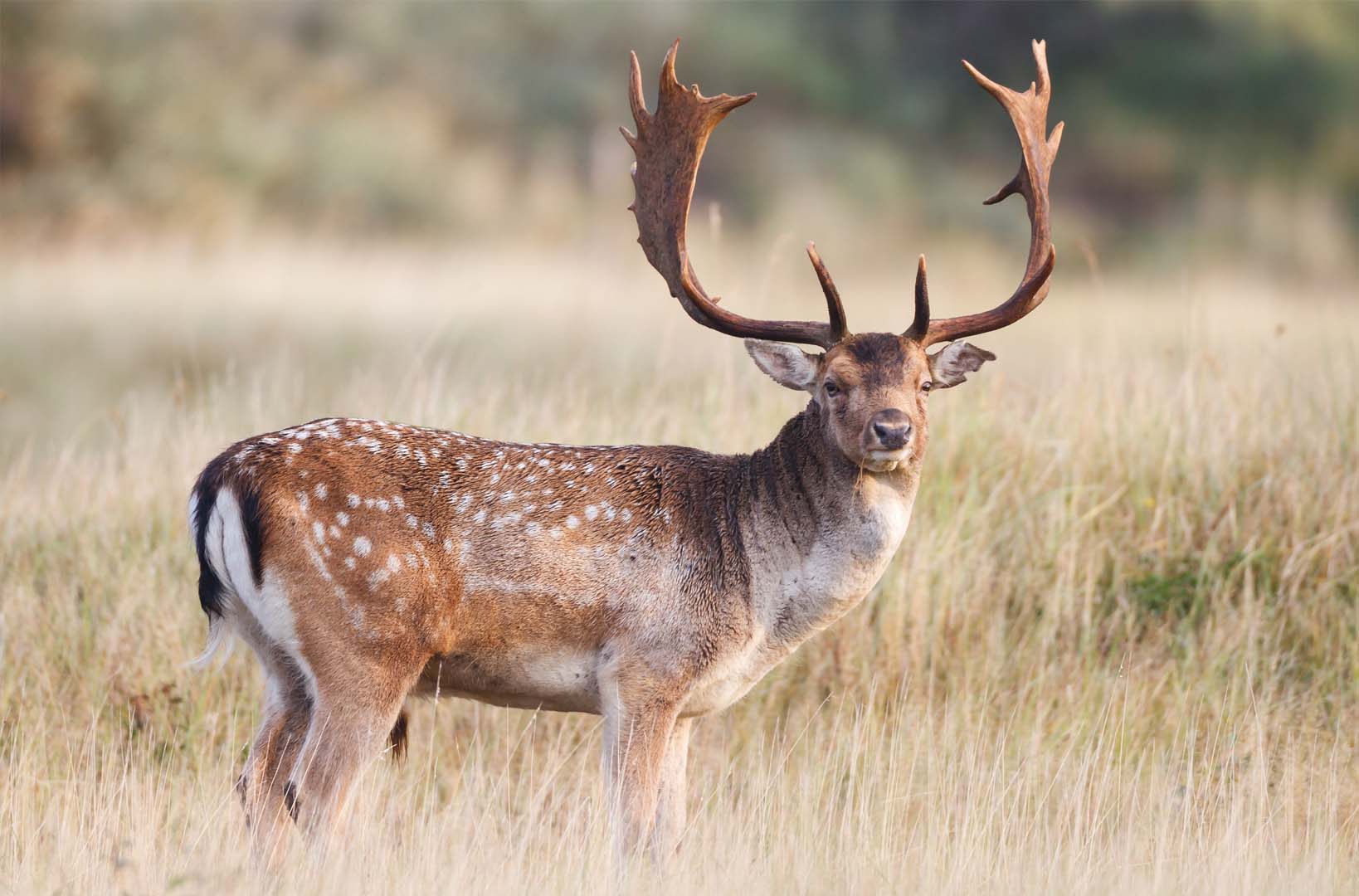
Colour phases and descriptions
Common
During summer the coat is rich brown shades. Often the animal will be generally chestnut to ginger coloured with white mottles, it is most pronounced in summer with a much darker, unspotted coat in the winter. The belly is often shaded toward grey washing to white toward the centre and the light-coloured area(caudal disk) around the tail is edged with black. The tail is light with a black stripe. The deer will carry a pronounced dorsal stripe.
Menil
In effect a lighter, paler version of the common although spots are more distinct than common in summer. Due to a lack of black melanin in the coat (D. Banwell, The Fallow deer), no black is seen around the rump patch or on the tail. In winter, spots are still clear on a darker brown coat. The dorsal stripe, caudal disk surround and upper tail are of a brown shade rather than black as is seen in the common phase. Often confused with Common phase.
Melanistic (black)
Year round black phase although there can be some light shading to greyish-brown fading to a sooty brown to the animals belly. No light-coloured tail patch or generally any spots although very feint spots may be visible at some times in the year.
White (not albino)
Fawns are cream-coloured; adults become pure white, especially in winter. Dark eyes and nose are seen. The coat has no spots.
The European fallow deer was native to most of Europe during the period between the last two ice ages. In the Pleistocene (the last ice age), the distribution of Fallow was restricted to the Middle East and isolated in parts of the Mediterranean such as Sicily, Anatolia(Turkey) and the Balkans (Fernández-García, J. L. (2012) The endangered Dama dama mesopotamica: genetic variability, allelic loss and hybridization signals). Despite this, the fossil evidence of the species’ prehistoric presence in these apparent isolated regions is extremely “fragmented” which has contributed to the ongoing confusion about the species’ true distribution.
Pleistocene Fallow were larger, however populations have evolved over time into smaller animals (Kolska Horwitz, Liora (September 1986). “Faunal Remains from the Early Iron Age Site on Mount Ebal). Humans then began to expand the distribution of the deer in the last two millennia by introducing it throughout Europe and further. In the large area of the Eastern Mediterranean of Western Asia, fallow deer were an important source of meat in Palaeolithic cultures (420,000–200,000 BCE). Evidence is shown by bones which were often used for conserving the marrow to be eaten sometime after the kill. Despite the controversy surrounding the distribution of Fallow over time, general information available suggests that a form of fallow had existed on the landscape before the last ice age, and then during the Pleistocene, sustained significant setback of their distribution across their original home range to then be redistributed after the last ice age. The reintroduction of the fallow deer in Britain is at this time supposed to have been conducted in the eleventh century by the Normans. It is said, for instance, that the English ‘Tally ho!’ is derived from the Norman hunting call ‘Thiaulau’, used to report the sighting of a stag (Brander, Die Jagd von der Urzeit bis heute).
Generally speaking, Turkey is the only country known to have definitively native populations of European fallow deer since the Last Glacial period, populations there, as well as Persian fallow deer, have since become endangered and almost fully extinct.
Other possible geographic locations that may have served as refuges for the species during the last Ice Age include parts of the eastern Mediterranean, most of the Italian Peninsula in Italy, parts of the Balkans, and the Greek island of Rhodes Palaeontological evidence is inconclusive whether the present populations in these areas are truly native descendants of relict populations or were introduced by humans. Presently, the IUCN lists European fallow deer as being native to Italy, Turkey, Rhodes, & most of the Balkans, as having a population of uncertain origin in central Bosnia and being introduced to the rest of Europe.
In the South Pacific, Fallow are believed to have been first introduced and subsequently either released or escaped in Campbelltown, Tasmania in 1834 (The Deer Industry Association of Australia May (Autumn) 2012). However, newspaper articles from The Mercury (Hobart, Tasmania) reference “(Fallow)…derived from the V.D.L. Company’s stock at Circular Head. The first fallow deer (six does and a buck) imported into this colony arrived at Circular Head in the Wave, in November 1836, and after increasing rapidly for about twenty years, were turned loose, when the number, I believe, exceeded one hundred.” (The Mercury Hobart, Tasmania. Monday 22 July, RONALD C. GUNN. Launceston, 10th July, 1872). The Australian mainland stock was derived from these original importations and have been supplemented over time by other imports and introductions.
It is common knowledge that most deer introduced into Australia was by Acclimatization Societies with some of the earlier releases failing altogether. In Victoria, the earliest known release occurred in the 1840’s, during which time deer hunting was increasingly popularity including a substantial number on Phillip Island. The last of which reported to have been shot in 1920.
The fallow is now the most widespread of the 6 deer species introduced to Australia and wild populations have successfully adapted to the Australian environment in Tasmania, South Australia, Victoria, New South Wales and Queensland. With strong numbers still existing in those States, particularly prospering in more recent times in New South Wales.
The harsh Western Australia environment, although once harbouring a herd of free ranging Blackbuck, has not sustained Fallow to any sort of great success although small populations have been reported. In 1898, the Acclimatisation Committee of Western Australia applied, through the Government to the Secretary of State for the Colonies for a gift of deer from the Royal Parks. In response to this request the Committee received the following from the Secretary of State:
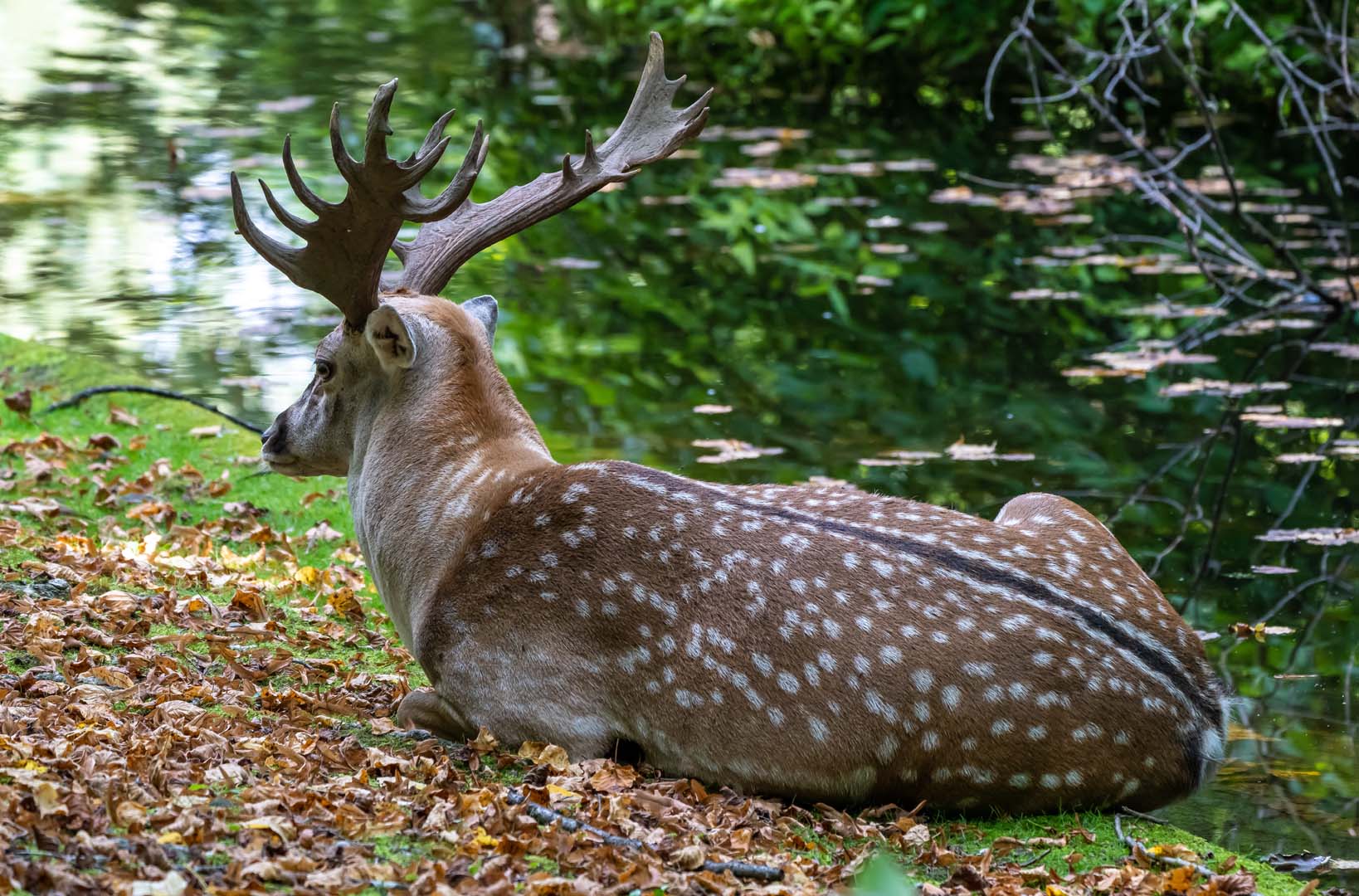
6th August, 1898
“In reply to your Despatch No. 1 of the. 12th January last, forwarding an application from the Acclimatisation Committee of Western Australia for a gift of deer from the Royal Parks, I have the honour to inform you that Her Majesty the Queen has been graciously pleased to consent to the grant of two male-and two female specimens of both red and fallow deer, and that the Agent-General of the colony has been requested to make arrangements for the transport of the animals.”
Those animals assumingly were sent and liberated in Western Australia in 1899 (Long 2003) and formed the basis of the sparse distribution of the animal which are now there.
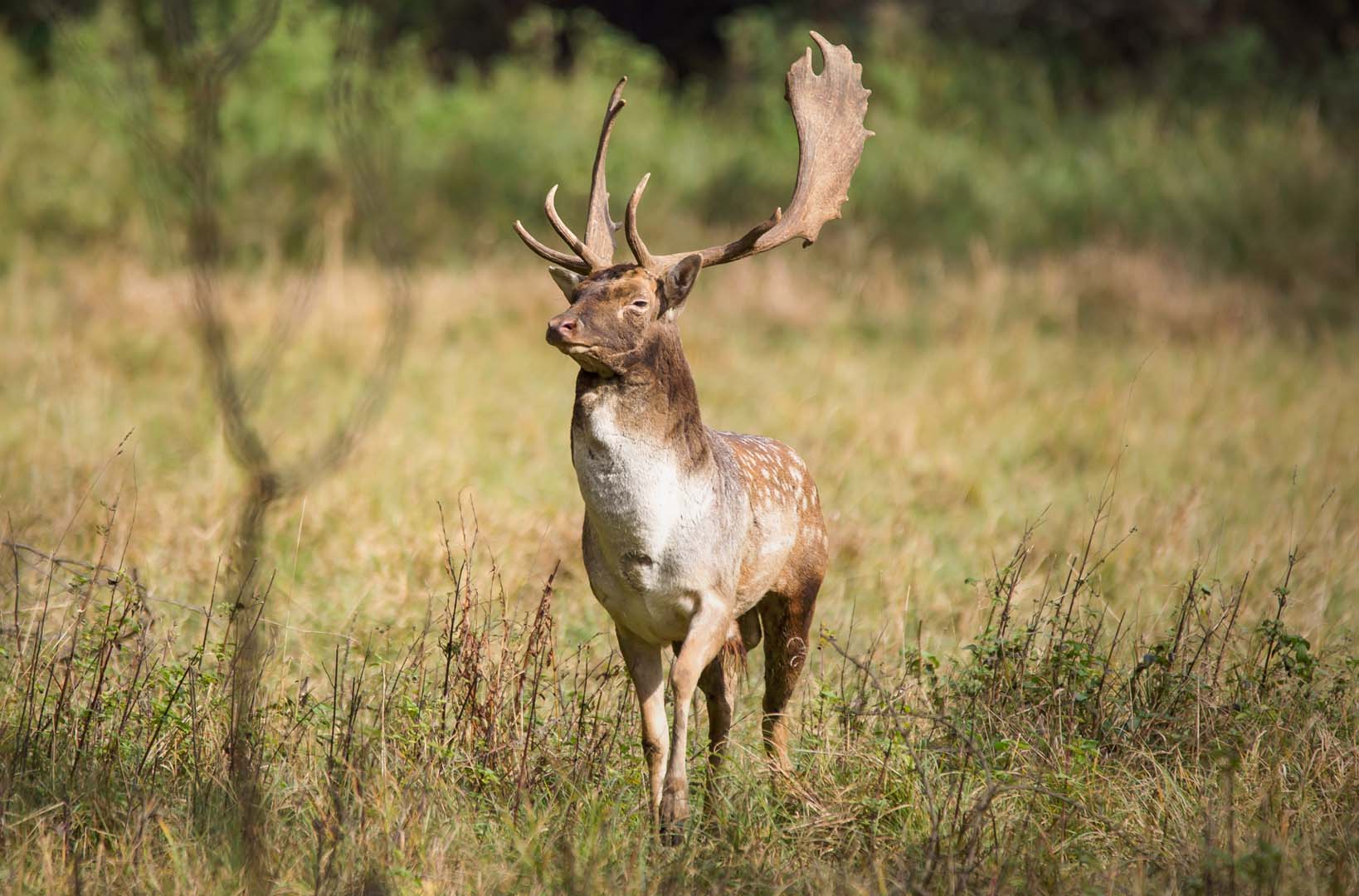
Fallow are gregarious and have been known to form large groups, of which changes throughout the year depending on available feed and the rut. Fallow graze on a wide variety of plant species which are in common with cattle, and likely a contributing factor to their domestication success. Although a general preference appears to be to grazing on grasses, the fallow has adapted to forest dwelling as well suggesting a hardy range of palatable feed. Although the Fallow can adapt to a wide variety of habitats, it cant commonly live in high altitude areas, or other regions with long snowy winters, where snow might restrict access to suitable feed. The absence of Fallow during the last ice age in Central Europe suggests their more Temperate climate requirements or preference.
Although the European Fallow is listed as “Least concern” by the IUCN, there has been a serious decline in the populations of European fallow deer in Turkey since the 20th century. It has disappeared from almost all regions where it was formerly found aside from Düzlerçami Game Reserve, where a semi-wild, genetically distinct population exists. The Turkish government undertook a breeding program at Düzlerçami starting in 1966, with the population growing from 7 to 500 animals, but it underwent a massive collapse until 2000 due to reasons not fully understood. The IUCN list the Persian species as Endangered and currently is only found in Iran and Israel being bred in zoos and parks, as well as in Germany. In Australia and New Zealand, the Dama Dama species is doing well and readily accessible however indiscriminate helicopter shooting and ongoing culling by Australian Government agencies such as the Local Land Services or similar groups has damaged some populations across the country, potentially for many years.
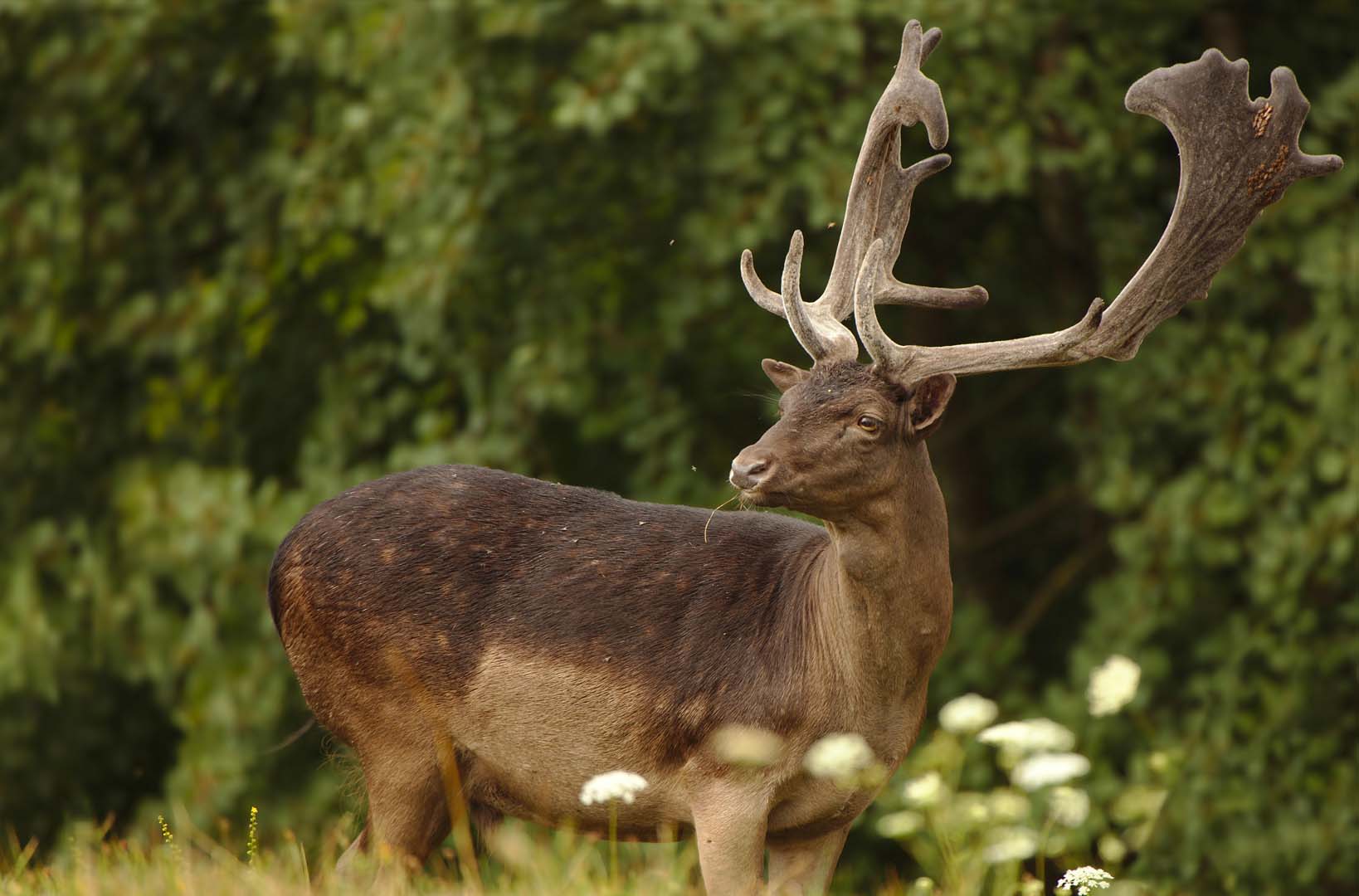
Fallow deer hunting opportunities are typically conducted in woodland/forested regions during the rut. The deer providing exciting engagements with their “croaking” and high activity around scrapes and leks at this time of the year. Fair chase hunts in Australia are conducted by stalking or still hunting rolling fringe farm country, while those in Europe can be driven hunts, stalking or still hunts from high seats in farm fringe. Currently, large trophy bucks in Europe are measured (and charged) by weight of the boiled full skull with antlers attached and charged as a trophy fee on top of a day rate, while hunts in Australia and New Zealand are generally flat fee. While the places that these deer can take a hunter are adventure driven, such as small towns across Europe, they are typically conducted within close proximity to city amenities and as such are accessible by a large range of hunter demographics.